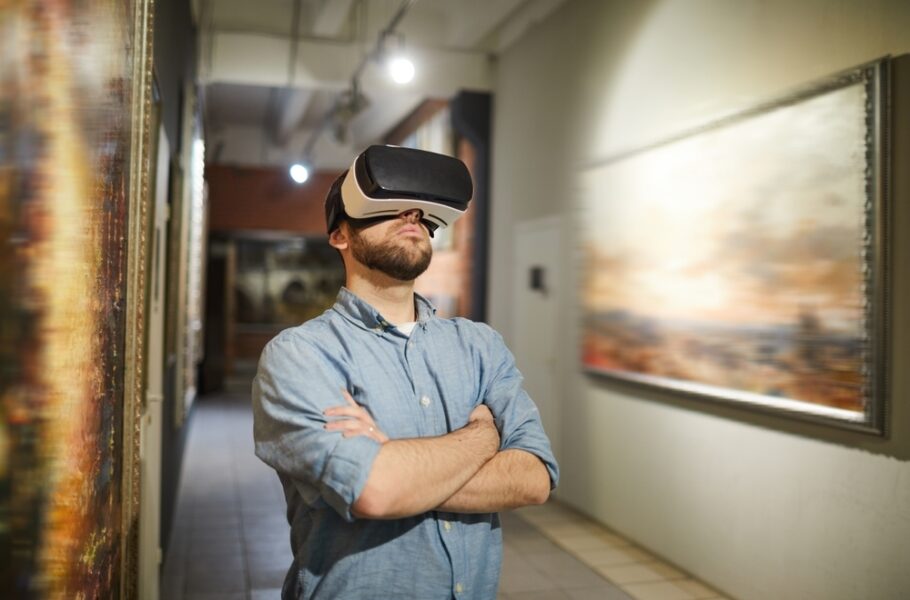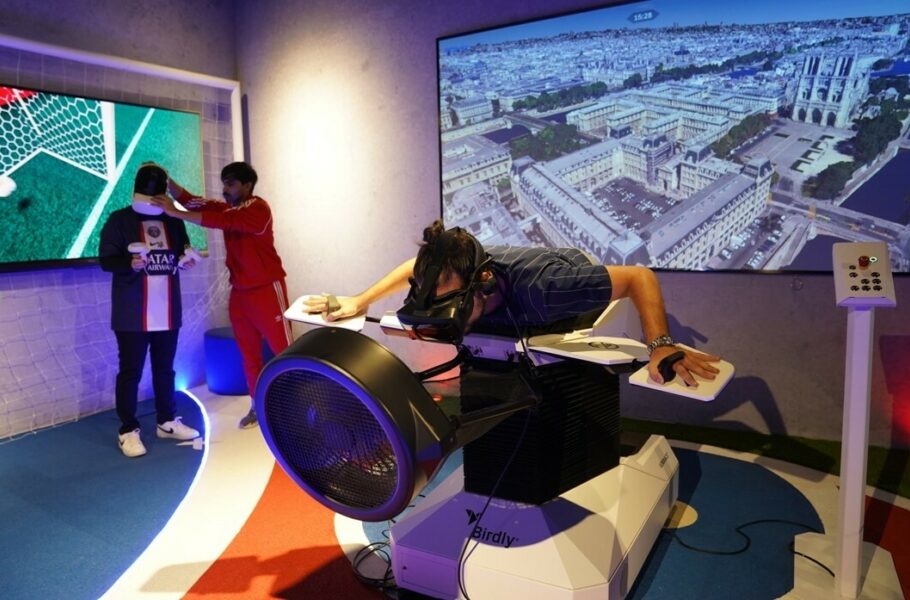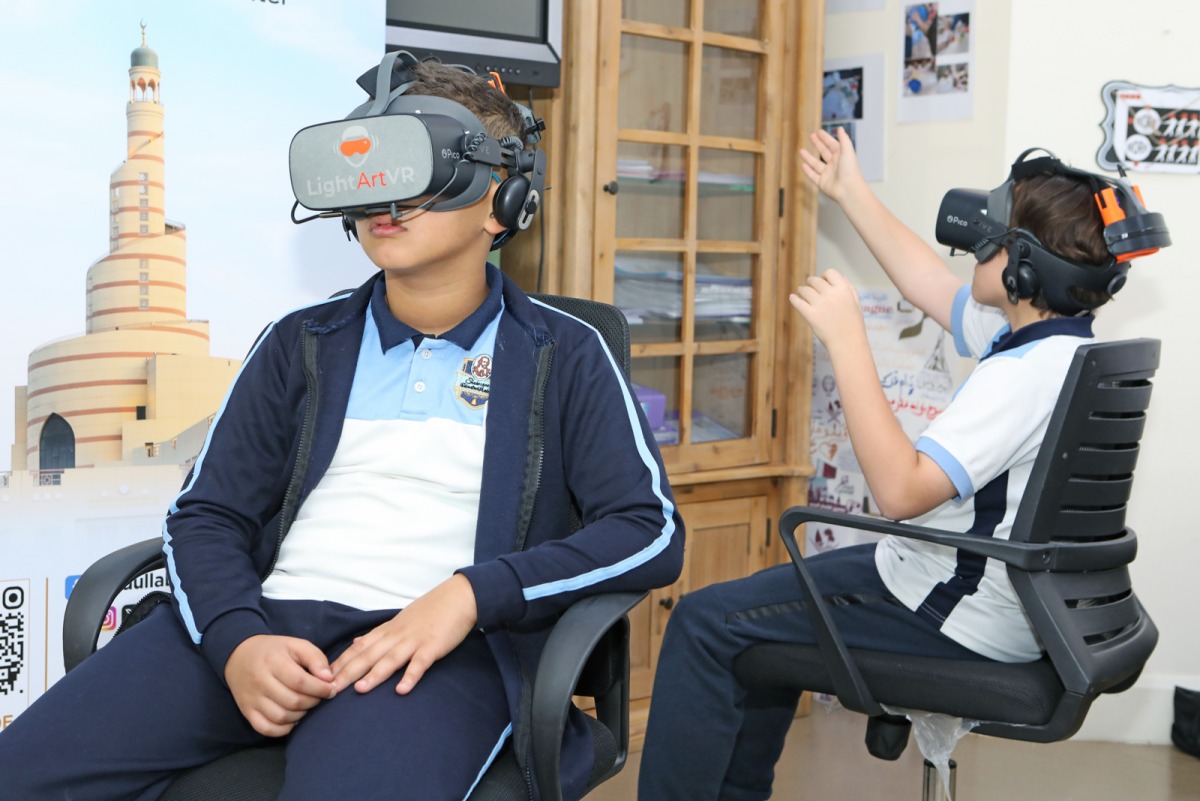Qatar’s museums are introducing virtual reality (VR) to offer visitors a new way to engage with art, history, and culture. These experiences aim to make exhibitions more interactive by allowing visitors to explore different time periods, environments, and stories using technology.
VR exhibits provide more than just visuals. They offer movement, sound, and interaction to help people connect with the content in a more personal way. Whether you’re a resident or a visitor, many of Qatar’s museums are using VR to create a fresh experience for people of all ages.
National Museum of Qatar: Exploring the Past in a New Way
The National Museum of Qatar uses VR to present Qatar’s heritage in a more immersive way. One of the experiences includes a virtual journey into the country’s pearling history. Visitors can explore a simulation of being underwater, helping them understand the work and risks involved in pearl diving.
Another VR feature in the museum allows users to view different historical stages of Qatar, such as life before oil discovery and urban development. These features support the museum’s efforts to present history in a more accessible and engaging format.
Museum of Islamic Art: A Closer Look at Cultural Heritage
At the Museum of Islamic Art, visitors can use VR headsets to explore various architectural landmarks and artistic styles from the Islamic world. Some VR tours take users inside restored mosques or historical buildings, showing details that may not be visible in regular displays.
One of the interactive exhibits lets users design a historical city using Islamic architectural elements. This type of exhibit is designed to encourage learning by allowing people to engage with historical content in a more hands-on way.
The museum also uses augmented reality to enhance exhibits. Visitors can scan certain objects with mobile devices to view digital layers of information, such as animations or visual timelines. This method helps deliver context while people move through the gallery.

Msheireb Museums: Reconstructing Old Doha
Msheireb Museums focus on documenting Qatar’s social history and urban transformation. Through VR, visitors can walk through a digital recreation of Doha’s past including markets, streets, and buildings from the early 20th century.
These simulations allow visitors to see how the city looked during earlier periods. One exhibit highlights the experiences of workers and communities during different stages of Qatar’s development.
Some VR content also explores the history of slavery in the region. The exhibits are designed to be respectful and informative, giving visitors an opportunity to learn about this part of the country’s history through storytelling and digital scenes.
3-2-1 Qatar Olympic and Sports Museum: Virtual Athletic Experience
This museum uses VR to provide sports-related experiences. One example lets users try virtual boxing, where movements are tracked and reflected on screen. Other simulations include Olympic events such as running or rowing, offering insight into the physical challenges athletes face.
The exhibits are meant to promote physical activity and help visitors understand various sports disciplines through digital interaction. These features are suitable for both young visitors and adults who are interested in sports history or training experiences.
Qatar Children’s Museum: Learning Through Digital Play
Although still under development, the Qatar Children’s Museum has begun testing VR exhibits for educational use. One pilot program includes a desert safari simulation, where children can learn about wildlife and plants in a virtual environment.
Another exhibit introduces basic space science by allowing children to experience virtual astronaut training. These activities aim to combine education with play in a way that’s suitable for younger audiences.
The museum ensures content is tailored for age groups, keeping safety and engagement in mind. The focus is on making learning more interactive through digital tools.
Souq Waqif Art Center: Traditional Skills in Virtual Space
The Souq Waqif Art Center occasionally features digital exhibits, including some that use VR. Visitors have had the opportunity to experience virtual workshops showing traditional crafts such as weaving or pottery.
Some art shows in this space include VR environments where the displayed art changes in response to movement or direction. These interactive exhibits are part of ongoing experiments with how art can be experienced through digital platforms.

How VR Is Shaping the Museum Experience
The use of VR in Qatar’s museums reflects a broader effort to make exhibitions more accessible and engaging. Unlike traditional displays, VR invites visitors to participate in the story by moving through spaces, hearing sounds, and interacting with objects.
This approach can be especially useful for students, educators, and tourists who want a deeper understanding of culture and history. It also provides options for people who prefer learning through action rather than reading.
VR tools may also help museums reach people who cannot visit in person. With some content available online, global audiences can experience parts of Qatar’s history and culture remotely.
The Road Ahead for Virtual Reality in Museums
Qatar’s museums are expected to continue investing in VR and digital engagement. Some are working on mobile apps and online platforms to expand access to virtual tours and interactive content.
There are plans to use artificial intelligence along with VR to create personalised tours based on individual preferences or learning goals. This could offer a more flexible and customised experience for each visitor.
Collaborations between museums and educational institutions are also increasing. Schools may soon be able to arrange digital field trips using these VR resources, bringing Qatar’s museum content into classrooms both locally and internationally.
Final Thoughts
Virtual reality is adding a new layer to museum experiences in Qatar. By combining storytelling with technology, museums are finding new ways to connect people with culture, history, and art.
The goal isn’t to replace traditional exhibits, but to enhance them offering more depth, interaction, and access. Whether it’s walking through old Doha, viewing restored Islamic architecture, or trying a sports simulation, VR gives visitors the chance to explore in a different way.
As technology continues to grow, these experiences are likely to expand, giving people more ways to learn and connect with Qatar’s cultural heritage.
Do follow Gulf Magazine on Instagram
Also Read – Qatar Autonomous Vehicle Trials Show Incredible Growth in 2025



